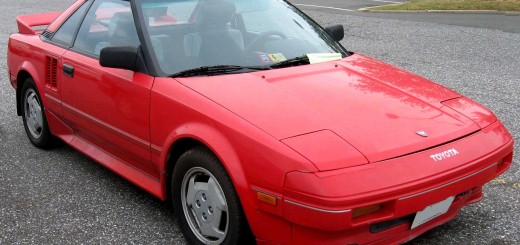The water pump pumps water into the block, it circulates into the head and comes out of the head on the passenger side above the water pump. The water travels passed the cap and forward to the radiator, entering at the top. The water comes out the bottom of the radiator and travels rearward to the thermostat housing. When the thermostat is open the water travels through the pipe under the intake manifold to the water pump. This water travel is backwards of what it looks like it should be in the car. This also means that almost all of the water in the system must be heated before the thermostat opens. This helps the motor to get to operating temps quicker, but also means that if there is a delay in the thermostat opening, the block and head can overheat very quickly. It is for this reason that the system MUST be bled correctly. An air bubble by the thermostat would cause it not to open. I guess that is why there is a bleed valve there.
I have also heard that the flow of water through the head goes from #1 cyl through to #4 cyl. Therefore #4 cyl gets preheated water, gets less cooling effect and is the normal cyl to have head gasket problems and the exhaust manifold crack.
There is also an opening on the drivers side of the head. If the heater is on, water travels to the heater directly from the head and comes back to the back side of the thermostat housing. Therefore the heater does not need to wait for the thermostat to open to be able to provide heat. Also, if your car is overheating, turning on the heater can really help your motor. After all, if you are going to continue to drive, you deserve to be as uncomfortable as your motor.
When installing a thermostat, put the nipple (the triangle) into the side with the bleeder valve. The spring goes in the side with the heater hose on top (the hose that is returning from the heater).
There is also a hose on the backside of the thermostat housing that goes to the throttle body. When the water is hot enough it melts a bead of wax. This is what causes your idle to drop form 1500 to 800. Because of the age of our cars, this unit is starting to develope problems, though I have not had any.
There is a long and involved process for bleeding the cooling system. I have never done it. I park on a hill with the back end up after refilling the system and go to bed. Then I open the valve by the thermostat and close it. I do this for a couple of days or until I’m bored. But for your own piece of mind, go by the book.
This documentation in no way replaces the Toyota MR2 Repair Manuals. The purpose of this content is only to provide supplementary information to fellow MR2 enthusiasts. Midship Runabout and its contributing authors will not be held responsible for any injury or damages that may occur as the result of practicing any of the methods or procedures described within this website. Article and photo submissions are property of the contributing author.

